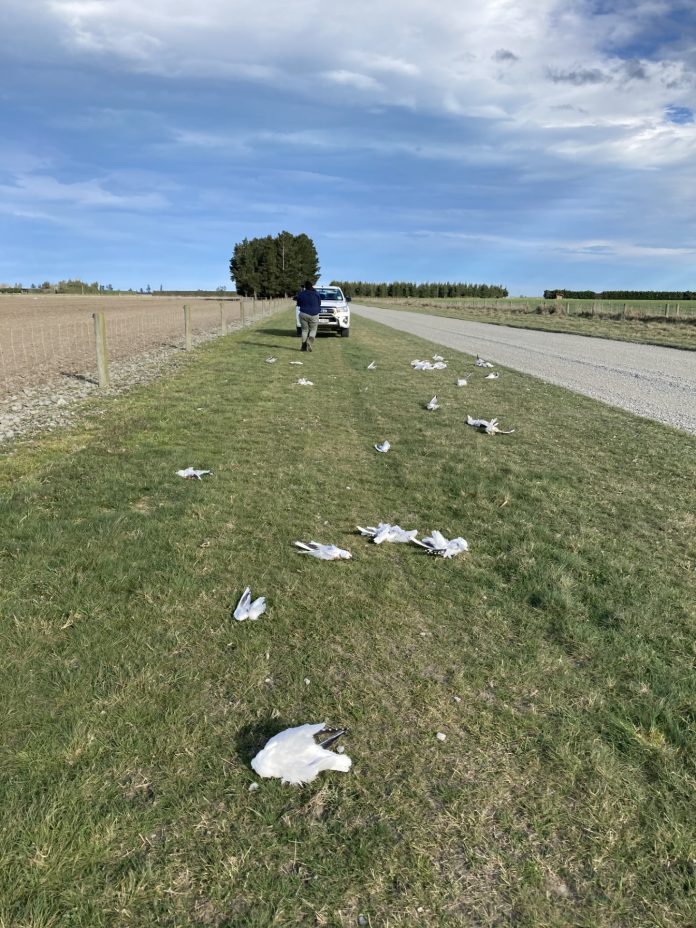
The Department of Conservation is investigating the deaths of 27 endangered tarāpuka, black billed gulls, found at two separate roadside areas at Lagmhor.
It is believed the birds were shot. Killing or injuring the endemic birds carries a fine of up to $100,000 or imprisonment.
The incident has been condemned by residents of the area.
Allan Sinclair came across the dead birds along the side of Winslow Westerfield Rd, at two sites about five kilometres apart, when he was jogging September 2.
He said blood on the birds’ feathers and missing wings led him to believe they had been shot.
‘‘They are pretty helpless really,’’ he said.
He suspected a random motorist may have stirred them off farms from the roadside.
The first group of eight could have been roused from a nearby farm pond then shot on the wing, while the second group of 19 could have been roused from a paddock on a separate farm then shot on the wing.
However, the farmer on the property with the pond, who did not want to be named, believes it is more likely both lots of birds were shot elsewhere and dumped there.
He had himself noticed the two areas of dead birds.
‘‘I thought it looked a bit suspicious. I think they have been dumped there to be fair, for them to all be in a group like that,’’ he said.
He had noticed the endemic gulls congregating on the farm pond in previous years, but not this year.
The birds had never been a problem on the farm, unlike their larger cousin the black backed gull which had pecked out the eyes of newborn lambs in the past.
‘‘But these wee black beaked gulls don’t do that,’’ he said.
‘‘It’s criminal really, because they are protected,’’ he said of the shootings.

Forest & Bird Ashburton branch chair Edith Smith also suspected the birds had been dumped at the two sites, perhaps thrown out a car window. She visited the area with an Environment Canterbury staff member last week.
She had retained four of the birds, which were being held in her freezer, for DOC to examine.
She was aware of the gulls being viewed negatively by some people.
‘‘While these gulls might be perceived to be ordinary seagulls, they are not. They are the rarest gull in the world, the most endangered gull. While they seem to be plentiful they are still regarded as at risk, and they are fully protected.’’
Department of Conservation Geraldine senior ranger biodiversity Ian Fraser said the department would be collecting the birds this week, and examining them.
‘‘They may then be sent to Massey University for a necropsy if a cause of death isn’t clear from our examination,’’ Fraser said.
‘‘We are looking into the cause of death and if the birds are found to have been intentionally killed, we will be trying to find whoever is responsible.’’
* If anyone has any information about what happened to the 27 dead gulls, they are advised to report it to the Department of Conservation by calling 0800 DOC HOT (0800 362 468).



